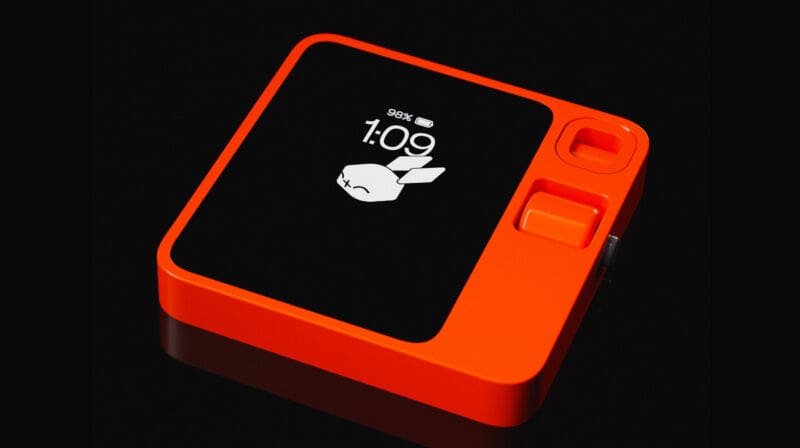
If you haven’t heard of the Rabbit R1, this is yet another “AI box” that is trying to replace your smartphone with a voice command device that runs zero apps. Just like the Humane AI Pin, this thing recently launched and seems to be dead on arrival as a completely non-viable device that doesn’t solve any real problems, has terrible battery life, and is missing big chunks of core functionality. Before the device fades into obscurity, though, Android Authority’s Mishaal Rahman looked at the software and found the “smartphone replacement” device just runs a smartphone OS. It’s Android—both an Android OS and Android app, just in a very limited $200 box.
OK, technically, we can’t call it “Android” since that’s a Google trademark that you can only access after licensing Google Play. It runs AOSP (the Android Open Source Project codebase), which is the open source bits of Android without any proprietary Google code. The interface—which is mostly just a clock, settings screen, and voice input—is also just an Android app. Being a normal Android app means you can install it on an Android phone, and Rahman was able to get the Rabbit R1 software running on a Pixel 6. He even got the AI assistant to answer questions on the phone.
Rabbit Inc. does not sound happy about Rahman’s discovery. The company posted on X that it is “aware there are some unofficial rabbit OS app/website emulators out there” and that since it does not want to support “third-party clients,” a “local bootleg APK without the proper OS and Cloud endpoints won’t be able to access our service.” The company describes its device as a “very bespoke AOSP and lower level firmware modifications,” but that’s a statement that would be true for many phones. In another statement to Rahman, the company threatens that it will “reserve all rights for any malicious and illegal cyber security activities towards our services.”
It’s unclear why the company seems to be so mad about the details of its tech stack being public, but from a technical standpoint, Rabbit Inc. is right to use Android, or specifically as much of AOSP as it can. Forget about all the Google Play stuff—if you have something that needs to connect a mobile network, manage charge states, light up a touchscreen, work hardware inputs and a camera, and use an SoC in a power-efficient way, AOSP already does all of this for you. It’s open source and can be used without any connections, obligations, or tracking from Google. You’d need to have a very good reason to spend a bunch of time and money reinventing all of this code when AOSP is free, works well, and is the de facto industry standard to run mobile components. This line of thinking aligns with Google’s master plan to make Android open source, and it ultimately makes sense.
The next question for a hardware developer is, “Should we use the app framework?” and that’s another thing that is hard to argue with re-inventing. The Android app framework will solve a million problems you probably already need to solve, let you define screens and navigation, handle inputs and settings, and countless other features. The next part of Android’s strategy is “Why not also sign up for Google Play and sign on the dotted line with Google, Inc?” This comes with a lot of cloud stuff like push notifications, online storage, millions of smartphone apps, all the proprietary Google code and tracking, and many restrictions and qualifications. A big chunk of those restrictions are around app compatibility, and that makes Google Play non-viable for a weird in-betweener device like the Rabbit R1. If you can’t smoothly slot into one of the categories of “smartwatch,” “smartphone,” “tablet,” “TV,” or “car” app, Google Play doesn’t have a place for you.
The Rabbit devs didn’t want to make a normal device with a million smartphone apps, so skipping Google Play was the right choice. Since you can only use the name “Android”—a registered Google trademark—in marketing if you sign up with Google Play, the company can’t exactly shout from the rooftops about what codebase it’s using. Rabbit’s opening sales pitch that it wants to “break away from the app-based operating system currently used by smartphones” feels a bit disingenuous when it’s using the exact operating system it’s hinting at, but from a technical standpoint, these feel like all the right decisions.
For the record, the Humane AI Pin also ran AOSP. The free and open source nature of AOSP makes it the obvious choice for mobile hardware that’s smaller than a laptop, VR headsets, digital signage, and a million other things that don’t need the expense or app compatibility of Windows. Nowadays, I just assume any new device from a startup is AOSP-based unless proven otherwise.























